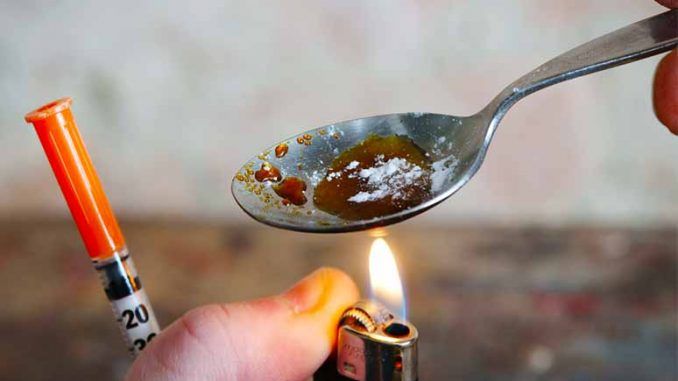
A new Harvard study reveals how Big Pharma and federal government have colluded to allow the current opioid epidemic in the United States.
The study, entitled The Opioid Epidemic: Fixing a Broken Pharmaceutical Market, describes how the American public have been duped by the elites for more than 20 years.
“In this article, we argue that non-rigorous patenting standards and ineffectual policing of both fraudulent marketing and anticompetitive actions played an important role in launching and prolonging the opioid epidemic. We further show that these regulatory issues are not unique to prescription opioids but rather are reflective of the wider pharmaceutical market.”

BYPASS THE CENSORS
Sign up to get unfiltered news delivered straight to your inbox.
You can unsubscribe any time. By subscribing you agree to our Terms of Use
Thefreethoughtproject.com reports: Researchers follow with a primer on the rise of opioid prescriptions and how pain became “the fifth vital sign.” By the 1990s, doctors realized that chronic pain was often ignored, and pain management became a hot topic. Physicians were urged to make greater use of opioids, with experts in the field downplaying the potential for misuse and addiction – a view largely based on experience with morphine.
But this was before OxyContin came along.
Purdue Pharma, recognizing that this newfound view of the medical establishment could be exploited, worked to develop an improved synthetic opioid. Their golden ticket was found with the extended-release oxycodone pill known as OxyContin, patented and approved by the FDA in 1995.
However, Purdue’s exclusive patent was based on corporate fraud and government ignorance.
“Purdue was able to patent extended-release oxycodone in the United States despite the fact that its constituent elements—the active ingredient oxycodone and the controlled-release system Contin—had been developed decades earlier…Oxycodone was used in clinical practice in Germany as early as 1917, and was first introduced in the United States in 1939.”
Purdue’s angle was to develop a controlled-release version of oxycodone, banking on its success with the patented MS Contin for morphine. Here’s where the feds stepped in to help.
The United States Patent and Trademark Office (USPTO) initially rejected Purdue’s patent request for extended-release oxycodone, citing the combination as “obvious.” But Purdue responded with a statistical falsehood – which the company knew was false – and the patent office made an about-face, granting the 20 year patent for OxyContin.
Since then, the cozy relationship between Big Pharma and government has grown, with the pharma industry spending almost a billion dollars in ten years on lobbying federal and state governments and campaign contributions.
As the Harvard study notes, “low patenting standards” and “a history of tepid enforcement” provided incentive for Purdue to embark on a massive, fraudulent marketing campaign. With the guarantee of no competition provided by government, Purdue spent obscene amounts of money getting American hooked on their newly-patented product.
“Between 1996 and 2000, the company more than doubled its U.S. marketing team…In 2001, Purdue paid forty million dollars in bonuses tied to extended-release oxycodone…Purdue also invested heavily in analytics, developing a database to identify high-volume prescribers and pharmacies to help focus their marketing resources…Patients were offered starter coupons for a free initial supply of extended-release oxycodone, 34,000 of which were redeemed by 2001…Finally, Purdue hosted forty all-expenses-paid pain management and speaker training conferences at lavish resorts. Over five thousand clinicians attended, receiving toys, fishing hats, and compact discs while listening to sales representatives tout the alleged benefits of extended-release oxycodone…Purdue elevated the stakes, spending an estimated six to twelve times more promoting extended-release oxycodone than its competitor Janssen spent marketing a rival opioid…
Purdue’s efforts paid off. Between 1996 and 2001, extended-release oxycodone generated $2.8 billion in sales. From 2008 to 2014, annual sales exceeded $2 billion.”
It gets even worse.
As the patent expiration for OxyContin approached, Purdue developed an “abuse-deterrent formulation” of the drug, for which FDA granted a patent in 2010. Not satisfied with a simple new patent, Purdue filed a “citizen petition asking the FDA to refuse to accept generic versions of the original extended-release oxycodone formulation on safety grounds.” Incredibly, FDA also granted this to Purdue, “effectively preventing the marketing of low-cost, therapeutically equivalent products that might undercut Purdue’s incentive to continue to widely promote its new abuse-deterrent formulation.”
By the way, the “abuse-deterrent” OxyContin doesn’t really deter addicts, and it has fueled the explosive heroin epidemic as addicts seek out cheaper, black market alternatives. But Purdue is content making its billions off the patented drug.
While thousands of Americans die under a campaign of deception and greed, official Washington pretends to care with the occasional fine levied against pharma companies, including for false marketing by Purdue.
But no one ever goes to jail; no one in top management is ever held to account. The persons in “personhood” conveniently disappear when corporations get in trouble. And the fines? Mere pocket change compared to the revenues already made from the drugs involved.
“Rather than deterring fraudulent marketing, the penalties simply became a cost of doing business.”
The Harvard study provides much more insight into the fraudulent marketing practices of Big Pharma, the patent schemes enabled by federal government, how generic drugs are routinely stifled, and possible ways to address the injustice.
Some of the more sinister effects of the system include “hard switches” which force patients to go from one costly patented drug to another instead of generics. The use of “citizen petitions” by pharma corporations to slow generic drugs and keep prices high is a particularly insidious scheme.
The study notes that today, “Over four million Americans misuse opioids each month” at a societal cost of $80 billion annually. 300 million prescriptions were written in 2015 in the U.S., which has a population of 323 million. This is reflected in the fact that 80 percent of the world’s opioids are consumed in the U.S., which has 5 percent of the world’s population.
The misuse of opioids is a not a simple issue, and personal choice is of course involved. But the above numbers point to something much bigger going on.
As the Harvard study confirms, Big Pharma has exploited the enormous addiction potential of opioids to prey upon the American populace for decades — made possible by a federal government with blatant disregard for the well-being of citizens.


